Ventriculoperitoneal shunt - series
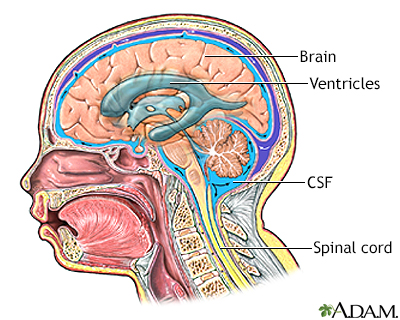
Normal anatomy
The cerebrospinal fluid (CSF) bathes the brain and spinal cord. Most of the CSF is in the ventricles of the brain, which are large cavities within the brain which produce and reabsorb the CSF.
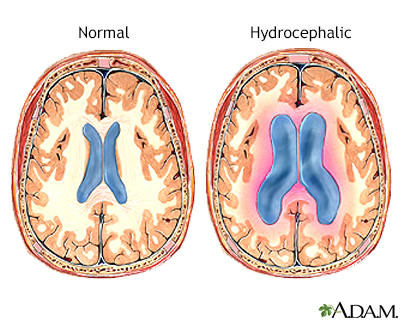
Indications
In hydrocephalus, the ventricles of the brain become enlarged with cerebrospinal fluid. This condition causes the brain tissue to become compressed against the skull, thus causing serious neurological problems. Shunting, called ventriculoperitoneal shunting, is necessary to drain the excess fluid and relieve the pressure in the brain. This should be done as soon as hydrocephalus is recognized to give the child the best possible neurological outlook.
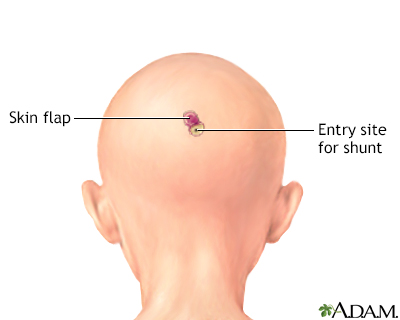
Incision
This procedure is performed in the operating room under general anesthesia. A flap is cut in the scalp and a small hole is drilled in the skull.
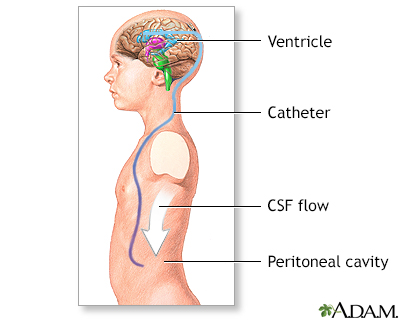
Procedure
A small catheter is passed into a ventricle of the brain. A pump is attached to the catheter to keep the fluid away from the brain. Another catheter is attached to the pump and tunneled under the skin, behind the ear, down the neck and chest and into the peritoneal cavity (abdominal cavity). The CSF is absorbed in the peritoneal cavity.
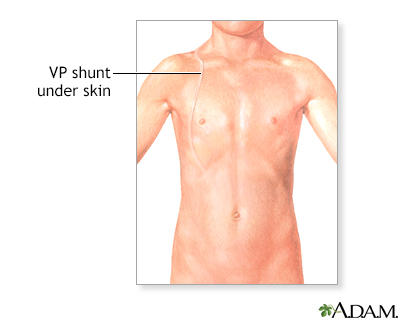
Aftercare
Ventriculoperitoneal shunting is often crucial for preventing serious brain damage in children with hydrocephalus. Common problems associated with VP shunts include shunt malfunction and shunt infection. Shunts are generally left in place for many years if they function without problems.
BACK TO TOP
Review Date: 11/9/2021
Reviewed By: Joseph V. Campellone, MD, Department of Neurology, Cooper Medical School at Rowan University, Camden, NJ. Review provided by VeriMed Healthcare Network. Also reviewed by David Zieve, MD, MHA, Medical Director, Brenda Conaway, Editorial Director, and the A.D.A.M. Editorial team.

Health Content Provider
06/01/2025
|
A.D.A.M., Inc. is accredited by URAC, for Health Content Provider (www.urac.org). URAC's accreditation program is an independent audit to verify that A.D.A.M. follows rigorous standards of quality and accountability. A.D.A.M. is among the first to achieve this important distinction for online health information and services. Learn more about A.D.A.M.'s editorial policy, editorial process and privacy policy. A.D.A.M. is also a founding member of Hi-Ethics. This site complied with the HONcode standard for trustworthy health information from 1995 to 2022, after which HON (Health On the Net, a not-for-profit organization that promoted transparent and reliable health information online) was discontinued. |
The information provided herein should not be used during any medical emergency or for the diagnosis or treatment of any medical condition. A licensed medical professional should be consulted for diagnosis and treatment of any and all medical conditions. Links to other sites are provided for information only -- they do not constitute endorsements of those other sites. © 1997- 2024 A.D.A.M., a business unit of Ebix, Inc. Any duplication or distribution of the information contained herein is strictly prohibited.
